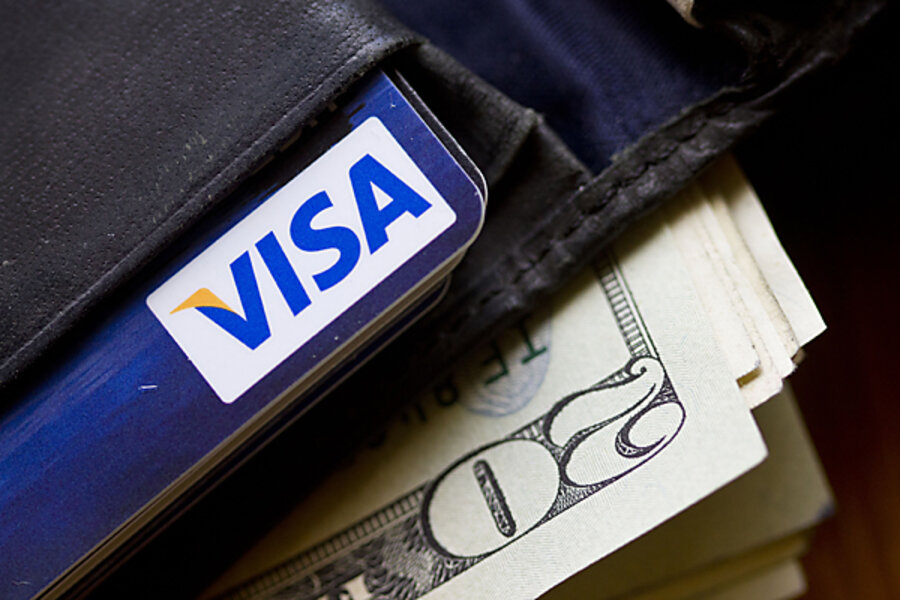Unstuff your overstuffed wallet
Loading...
This week, The Simple Dollar is running a short series on some of the key moments in my financial turnaround and how you can experience those moments as well. For a full description of this, see the first article in the series.
Those of you who watched the television series Seinfeld are probably familiar with the term “Constanza wallet.” It refers to a wallet that’s ridiculously overstuffed with cards and other paraphernalia; eventually, it explodes at a very inopportune time, sending cards and receipts and other detritus all over the place.
While the idea of a “Constanza wallet” is humorous, the truth of it isn’t so humorous. My own wallet was such a mess for many years. Inside it, one could find multiple bank cards, several credit cards, wads of receipts, and other miscellany.
Of course, what I found is that if I was always carrying all of these cards, I would always have an easy way to buy anything I wanted impulsively. I could just grab the first credit card I found and put whatever item I’d just discovered onto the plastic.
The end result? Big piles of credit card bills, resulting in an overstuffed mailbox to go along with my overstuffed wallet.
Cleanse Your Wallet or Purse
Obviously, one powerful technique to stop such impulsive purchases is to simply make those impulses harder. For me, this is something of a two-step procedure (with the second step occurring tomorrow), but the first step is quite simple.
Dump out your wallet and/or purse. Put one single bank card back into the wallet and/or purse, along with your basic identification and other essential cards.
That’s right, leave all of the other plastic at home when you go out. This way, you don’t have the ability to convince yourself that you can afford the item you’re looking at because you don’t have an array of means to pay for it easily.
It’s far better to leave the house with a single bank card than with credit cards. A bank card puts a limit on your spending that matches the cash you actually have. You cannot buy things on credit – it’s linked straight to your checking account.
Knowing that there’s such a tight limit on your spending makes you think twice about the things you’re thinking about buying.
Here’s an example. Imagine you’re standing in a store looking at a $30 item – it could be clothes, it could be a video game, it could be a bottle of liquor. Whatever it is, you want it but you don’t really need it.
If you have a wallet full of credit cards, you don’t have to think twice about the purchase. You just go buy it, usually on credit.
If you just have a bank card, you have to think about that purchase. Is there enough in my account to swing this purchase without overdrafting my account? Will this make my electric or phone bill payment bounce? Do I really need this item after all?
When you have just one card, you force yourself to think these questions about the purchases you make. You don’t have the luxury to buy such things without thinking about them; instead, by simply emptying out your wallet or purse, you’re making sure that in the future, you’re going to have to think a little more carefully about your purchases. That’s nothing but a good thing.
There’s another huge advantage, too: if you only regularly carry one card, then if you ever lose your wallet or are robbed, there’s only one card to cancel and there’s much less danger of identity theft.
That’s not to say that you shouldn’t have a credit card or two. They can certainly be useful at the right time. The purpose of this is to simply make the credit cards less convenient, which means you have to think more carefully about the purchases you’re making and whether they’re worth putting yourself into debt.
What about that pile of credit cards at home? Tune in tomorrow for a suggestion for putting those in a good place.
Add/view comments on this post.
------------------------------
The Christian Science Monitor has assembled a diverse group of the best economy-related bloggers out there. Our guest bloggers are not employed or directed by the Monitor and the views expressed are the bloggers' own, as is responsibility for the content of their blogs. To contact us about a blogger, click here. To add or view a comment on a guest blog, please go to the blogger's own site by clicking on the link above.





